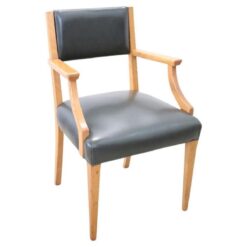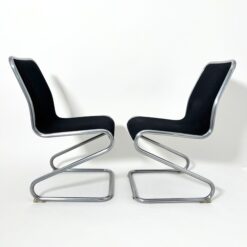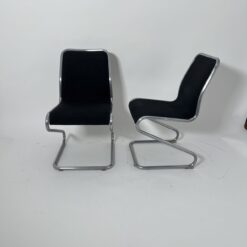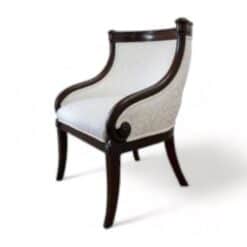Best Sellers
Furniture, Styylish History
The History and Origins of Antique Desk Chairs
The History and Origins of Antique Desk Chairs
Antique desk chairs, with their rich history and diverse styles, offer a fascinating glimpse into the evolution of furniture design and craftsmanship. From the grandiose and ornate to the sleek and functional, these chairs have not only served as essential pieces of office furniture but also as symbols of status, comfort, and innovation. In this blog post, we will explore the history and origins of antique desk chairs, highlighting famous styles, materials, and designers that have left an indelible mark on this fascinating piece of furniture.
Early Beginnings: The Renaissance and Baroque Eras
The Renaissance Era (14th-17th Century)
The history of desk chairs can be traced back to the Renaissance era, a period of renewed interest in art, culture, and humanism. During this time, furniture design saw significant advancements in terms of both functionality and aesthetics. Desk chairs from the Renaissance period were often elaborate and intricately carved, reflecting the opulence and grandeur of the era. Typical materials used included rich, dark woods such as oak and walnut, adorned with detailed motifs and upholstery. These chairs were often found in the offices of scholars and nobility, reflecting the intellectual and cultural revival of the period.

This 17th century chair is made of Oak, and currently on display at the Metropolitan museum of Art.
The Baroque Era (17th-18th Century)
The Baroque era, following the Renaissance, brought even more extravagance to furniture design. Baroque desk chairs were characterized by their dramatic, ornate designs and the use of luxurious materials. Gilded wood, velvet upholstery, and intricate carvings were common features. These chairs were not just functional pieces of furniture but also status symbols, often found in the offices of high-ranking officials and wealthy individuals. The grandeur of the Baroque style mirrored the societal emphasis on power and display during the period of absolute monarchies and the rise of the aristocracy.
This walnut desk chair showcases the craftsmanship of the Baroque era with carvings on the armrests and beautiful gold upholstery.

This beautiful Louis XV style armchair dates back to around 1860 and originates from France. The wooden frame of the birchwood chair has exquisitely hand carved details, making it a gorgeous yet comfortable desk chair.

The Rise of Functionality: The 18th and 19th Centuries
The Georgian Era (1714-1837)
The Georgian era marked a shift towards more functional and comfortable furniture designs. Desk chairs from this period were still elegant but more restrained compared to their Baroque predecessors. Notable designers like Thomas Chippendale introduced chairs that combined comfort with refined aesthetics. Chippendale’s designs often featured straight lines, curved backs, and upholstered seats, offering a balance between form and function. Mahogany was a popular material during this time, known for its durability and rich color.

The rise of the British Empire and the accompanying increase in trade and wealth influenced the availability of rich materials and the desire for sophisticated, well-crafted furniture.
Discover these stunning desk chairs on Styylish, sold together or separately. These antique chairs date back to Vienna in 1820. The chairs consist of mahogany solid wood with tasteful ebony inlays, leaving a beautiful and elegant appearance. The inlays are most prominent on the backrest and showcase a grecian design.

The Victorian Era (1837-1901)
The Victorian era saw a resurgence of ornate design, but with an increasing focus on comfort and ergonomics. This period introduced the concept of the office chair, designed specifically for prolonged use at a desk. Mahogany and rosewood were popular materials, and chairs often featured intricate carvings, turned legs, and padded seats and backs for added comfort. The Victorian antique desk chair became a staple in both home offices and professional environments, combining elaborate design with practical use. The Industrial Revolution, with its advances in manufacturing and increased focus on productivity, played a significant role in shaping the design and functionality of Victorian furniture.
This exquisite walnut Victorian desk chair is available on Styylish today.

This beautiful Biedermeier chair makes the perfect desk chair. It is decorated with a pretty walnut veneer and has a beautiful open work back embellished with an ebonized lyre motif.

The Advent of Modern Design: The 20th Century
The Arts and Crafts Movement (Late 19th-early 20th Century)
The Arts and Crafts movement, which emerged as a reaction against industrialization, emphasized traditional craftsmanship and simple forms. Desk chairs from this period were characterized by their solid wood construction, minimal ornamentation, and high-quality materials. Designers like Gustav Stickley championed the use of oak and introduced designs that were both sturdy and aesthetically pleasing. This movement was a response to the perceived loss of craftsmanship and individuality in furniture making. The movement advocated for a return to handcrafted quality and the use of natural materials in antique desk chairs.

The Bauhaus Movement (1919-1933)
The Bauhaus movement revolutionized furniture design by prioritizing functionality and simplicity. Bauhaus designers like Marcel Breuer and Ludwig Mies van der Rohe created desk chairs that were sleek, modern, and highly functional. The Breuer Cesca Chair, designed by Marcel Breuer in 1928, features a sleek, minimalist design with a cantilevered tubular steel frame that supports a woven cane seat and back rest.

This iconic chair combines the Bauhaus movement’s principles of functionality and simplicity, offering both comfort and modern aesthetic appeal. The societal shifts towards modernism and the aftermath of World War I influenced the Bauhaus’s embrace of new materials and the focus on practical, affordable design for the masses.

This classic Bauhaus antique desk chair is available today on Styylish. Crafted in Germany circa 1935, it features a new chrome-plated tubular steel frame that exudes sleek elegance. Further, the armrests boast a high gloss black lacquer finish, while the chair is upholstered in rich black leather. With its clean lines and innovative design, this armchair embodies the Bauhaus principles of form and function.
The Mid-Century Modern Era (1940s-1960s)
Mid-century modern design further pushed the boundaries of furniture design with its emphasis on organic forms, clean lines, and new materials. Designers like Charles and Ray Eames introduced desk chairs that were both stylish and ergonomic. The Eames Office Chair, with its molded plywood and leather upholstery, became an iconic piece of furniture that combined comfort with cutting-edge design. This era was influenced by post-war optimism, technological advancements, and a desire for functional yet aesthetically pleasing desk chairs.

This Robin Day Armchair model 675 for Airborne from the 1950’s makes an excellent desk chair. Its high back rest achieves comfort with curved molded plywood that forms two curved armrests. Additionally, its seat has stunning green velvet upholstery.
Cherishing the Artistry of Antique Desk Chairs
In conclusion, the history of antique desk chairs is a rich tapestry of evolving styles, materials, and craftsmanship. From the opulence of the Renaissance and Baroque eras to the functional elegance of Georgian and Victorian designs, and the modern innovations of the 20th century, each period has contributed to the enduring appeal of these essential pieces of furniture. As we look back on the origins and evolution of desk chairs, we gain a deeper appreciation for the artistry and ingenuity that have shaped their design, making them timeless icons of comfort and style.



































